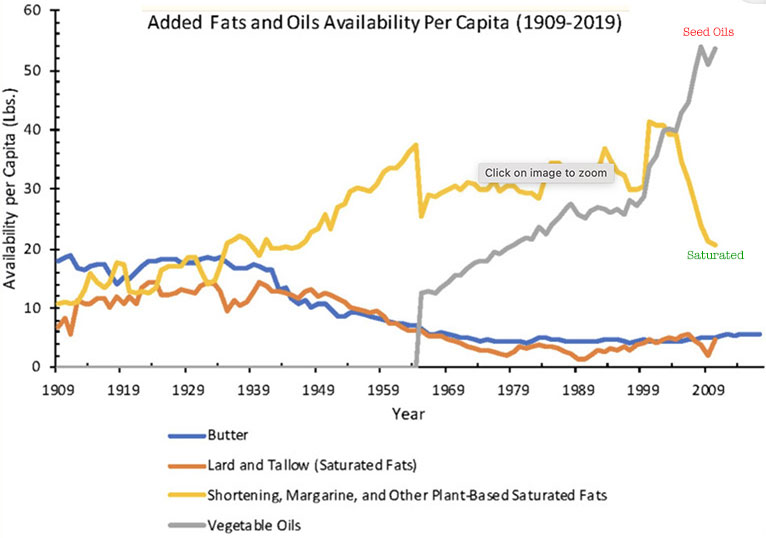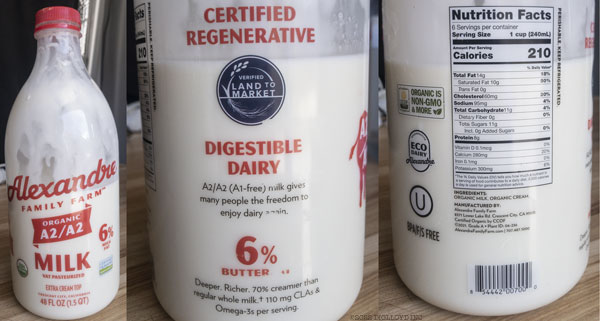Dietary Saturated Fats and Health: Are the U.S. Guidelines Evidence-Based?
re: nutrition and dietary fats and seed oils
re: Nina Teicholz
Real science is never settled, and anyone who has certainty on such things is not qualified to discuss it.
The “saturated fat is bad for you” myth has never had any credible evidence.
Today, it is the religious dogma of sociopathic medical societies, and of course your intellectually bankrupt and morally degenerate government.
See also: Nina Teicholz tweet thread on Amercian Heart Associate vs evidence and
Nina Teicholz: The Big Fat Surprise: Why Butter, Meat, and Cheese Belong in a Healthy Diet @AMAZON
Dietary Saturated Fats and Health: Are the U.S. Guidelines Evidence-Based?
2021. Emphasis added.
The last decade has seen nearly 20 papers reviewing the totality of the data on saturated fats and cardiovascular outcomes, which, altogether, have demonstrated a lack of rigorous evidence to support continued recommendations either to limit the consumption of saturated fatty acids or to replace them with polyunsaturated fatty acids.
These papers were unfortunately not considered by the process leading to the most recent U.S. Dietary Guidelines for Americans, the country’s national nutrition policy, which recently reconfirmed its recommendation to limit saturated fats to 10% or less of total energy intake, based on insufficient and inconsistent evidence.
Continuation of a cap on saturated fat intake also fails to consider the important effects of the food matrix and the overall dietary pattern in which saturated fatty acids are consumed.
1. Introduction
...national nutrition policy has consistently advised limiting saturated fat consumption as a central strategy for reducing risk for atherosclerotic cardiovascular disease (CVD). Saturated fatty acids are defined as those molecules that are “saturated” by hydrogen, without any double bonds. They are found in all foods but are especially concentrated in dairy, red meat, and the so-called tropical oils. In 1990, the DGA added a specific cap limiting these fats to 10% of calories [1] which has remained in place ever since...
2. Historical Perspective on Dietary Saturated Fat Recommendations
The hypothesis that saturated fats cause CVD emerged in the late 1950s, when scientists observed that these fats tend to raise the concentration of total serum cholesterol, which in turn was considered a potent risk factor for heart disease. Ancel Keys, a physiologist at the University of Minnesota, postulated that saturated fats along with dietary cholesterol were the principal causes of cardiovascular disease, and his “diet-heart hypothesis” was adopted by leading groups, including the American Heart Association....
[WIND: Ancel Keys was a scientific fraud and self promoter, excluding data from countries that did not meet his crackpot hypothesis, intimidating his detractors, etc. Sort of a one-man prototypical Big Pharma thug. And he started it all by feeding rancid (highly damaged) fat to herbivores (rabbits)].3. The Role of LDL-Cholesterol
Additional evidence used to support the continued recommendation for limiting saturated fat consumption comes from the well-demonstrated ability of SFAs to raise LDL-cholesterol concentration, which becomes evident when SFAs are replaced by PUFAs [30]. However, unlike LDL-cholesterol-lowering with drugs, cholesterol-lowering by diet has not reliably been shown to reduce cardiovascular outcomes...
4. Current U.S. Dietary Guidelines for Saturated Fats
For the 2020 DGA process, the USDA excluded from consideration all systematic reviews conducted outside the agency, choosing instead to rely on novel reviews performed by the USDA staff. Thus, the approximately 20 review papers on saturated fats mentioned above which were published during the last decade by “external” scientists were excluded from consideration...
5. Importance of the Food and Diet Matrix
Saturated fats are increasingly being viewed as part of the food matrix and dietary patterns in which they appear naturally, rather than as an isolated nutrient [31,48]. Cheese and yogurt, for example, contain not only saturated fats but also other fatty acids, proteins, the milk fat globule membrane, potassium, and a number of essential nutrients including calcium, phosphorus, vitamins A, D, and B12, riboflavin, niacin and pantothenic acid. These nutrients interact with each other, and one can play a role in the effective absorption of another....
...people consume foods, not nutrients, and furthermore, that they consume many of those foods in various amounts and combinations with each other.
In addition to the food matrix, the overall dietary pattern, particularly the level of carbohydrate, has an important impact on the way saturated fat is metabolized [31,50]. For example, if lowering saturated fat intake is achieved by consuming more carbohydrate, there is likely to be an adverse effect on CVD risk [51]. On the other hand, higher saturated fat intake in the context of a low-carbohydrate diet promotes less stimulation of insulin and greater oxidation of saturated fat. Such low-carbohydrate diets have been repeatedly shown to result in less accumulation of circulating saturated fatty acids [52,53] and improved diabetes [54] as well as cardiometabolic risk status [55].
6. Conclusions
Multiple reviews of the evidence have demonstrated that a recommendation to limit consumption of saturated fats to no more than 10% of total calories is not supported by rigorous scientific studies. Importantly, neither this guideline, nor that for replacing saturated fats with polyunsaturated fats, considers the central issue of the health effects of differing food sources of these fats....
WIND: eat whole unprocessed foods, minimized added sugar and excess carbohydrates, live long and prosper.
White-coat lab scientists playing with test tubes have thought of the human diet as a collection of separate nutrients bearing no relation to each other. Hence the explosion of supplements which ignore the complex physiological effects of whole unprocessed foods, which contain a payload of a host of nutrients in proper proportions for the human body.

Tweeted by Nina Teicholz:
During the 20th C, as heart disease became the nation's #1 killer, consumption of animal fats declined (blue and orange lines are butter, tallow, lard).
What went WAY up was consumption of vegetable oils (gray line). Saturated fats so clearly not the problem.
WIND: the statement is well supported by the evidence (“saturated fats so clearly not the problem”). It doesn’t tell you what *is* the issue.
But the “experts” (propagandists) would have you believe that a dose-response relationship exists. Well, if there is one, it is clearly an inverse relationship!










